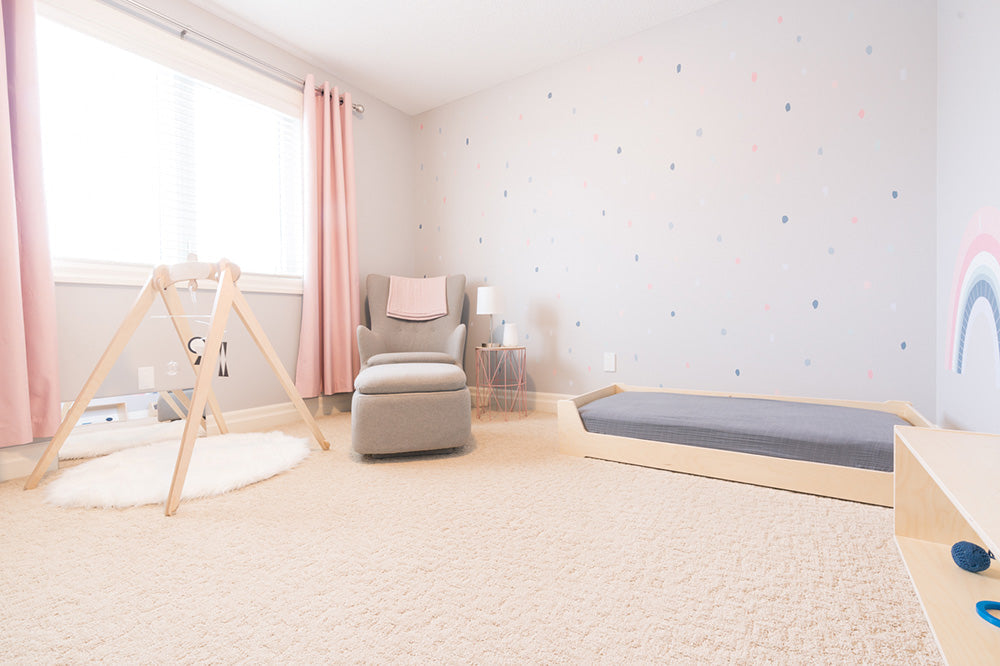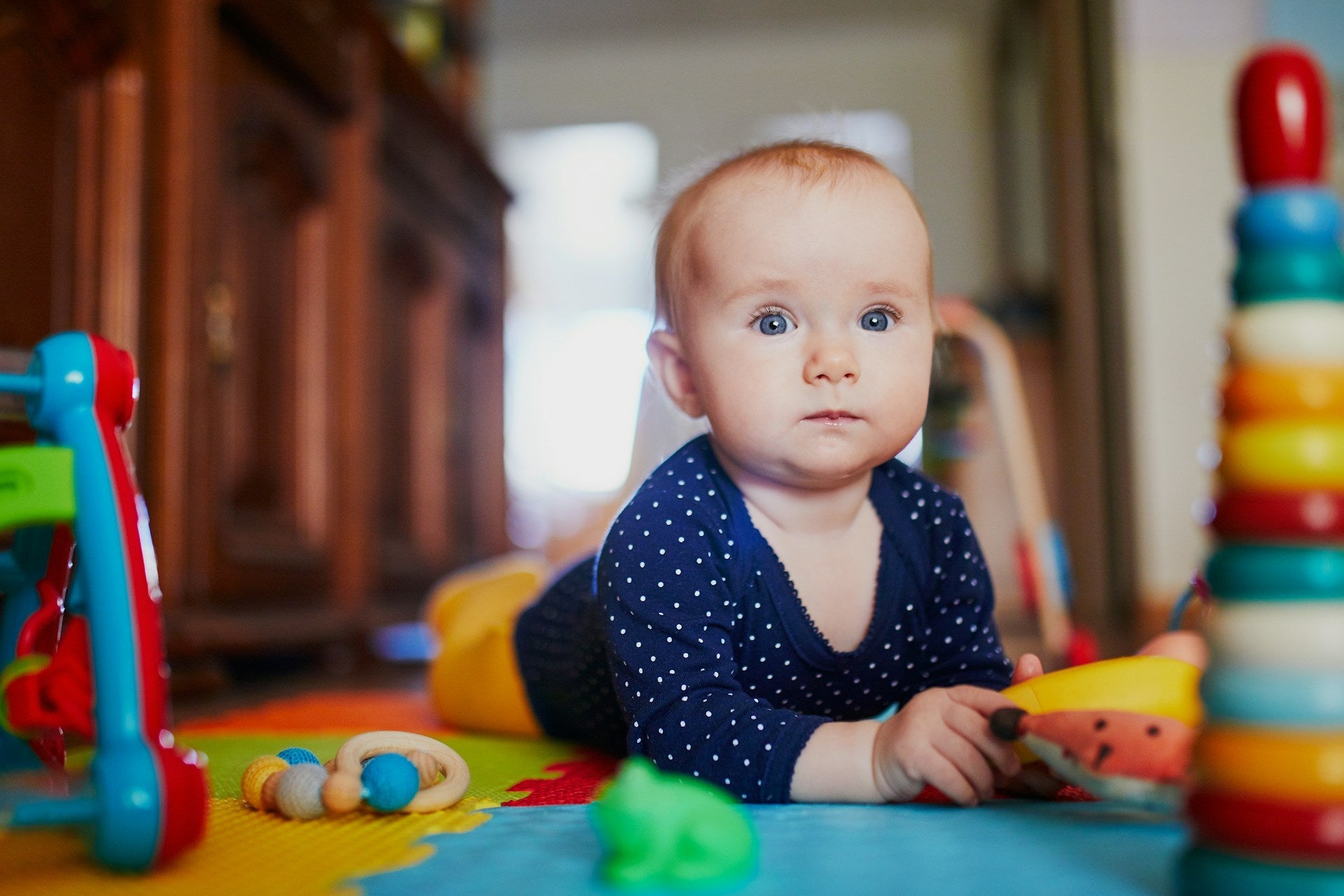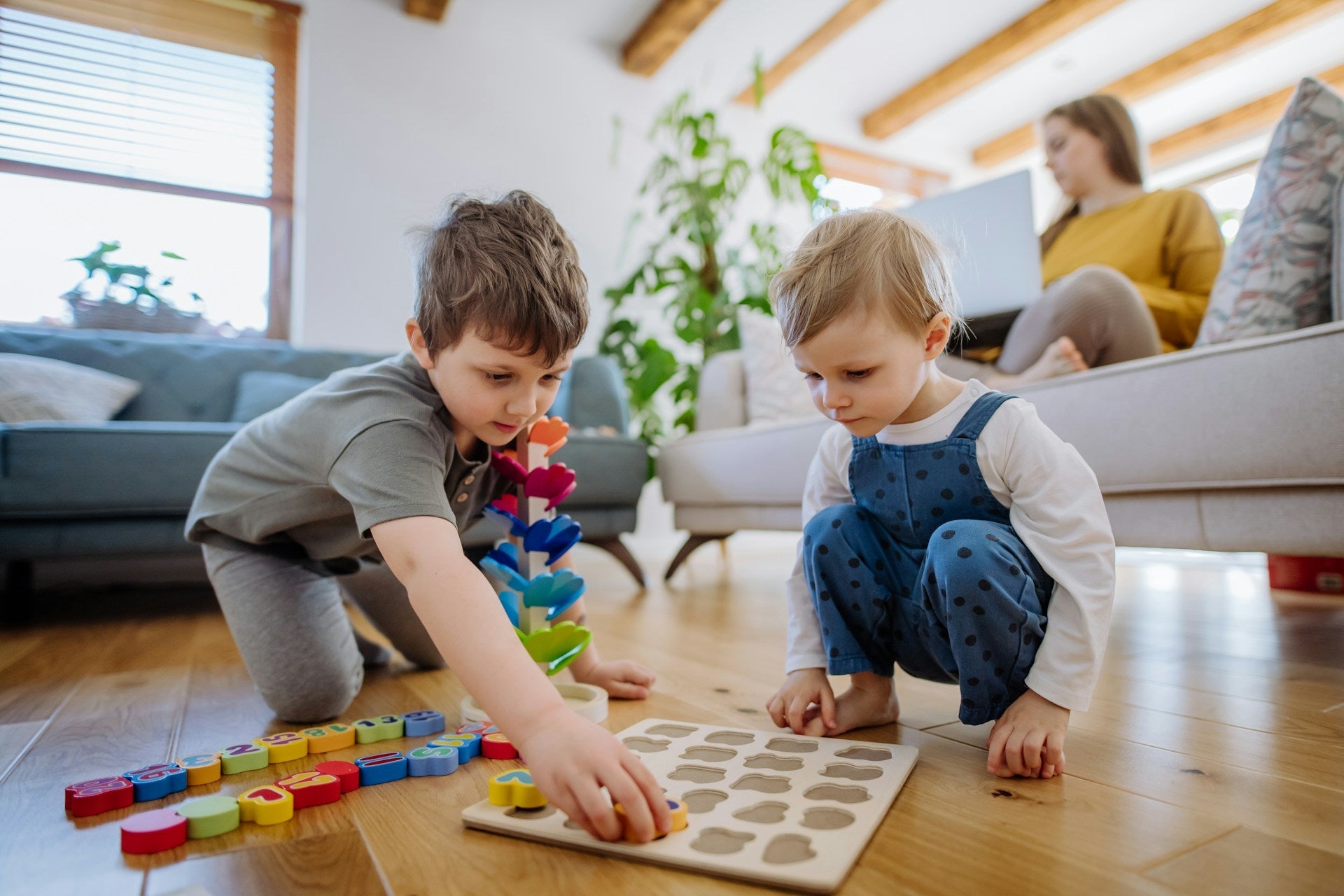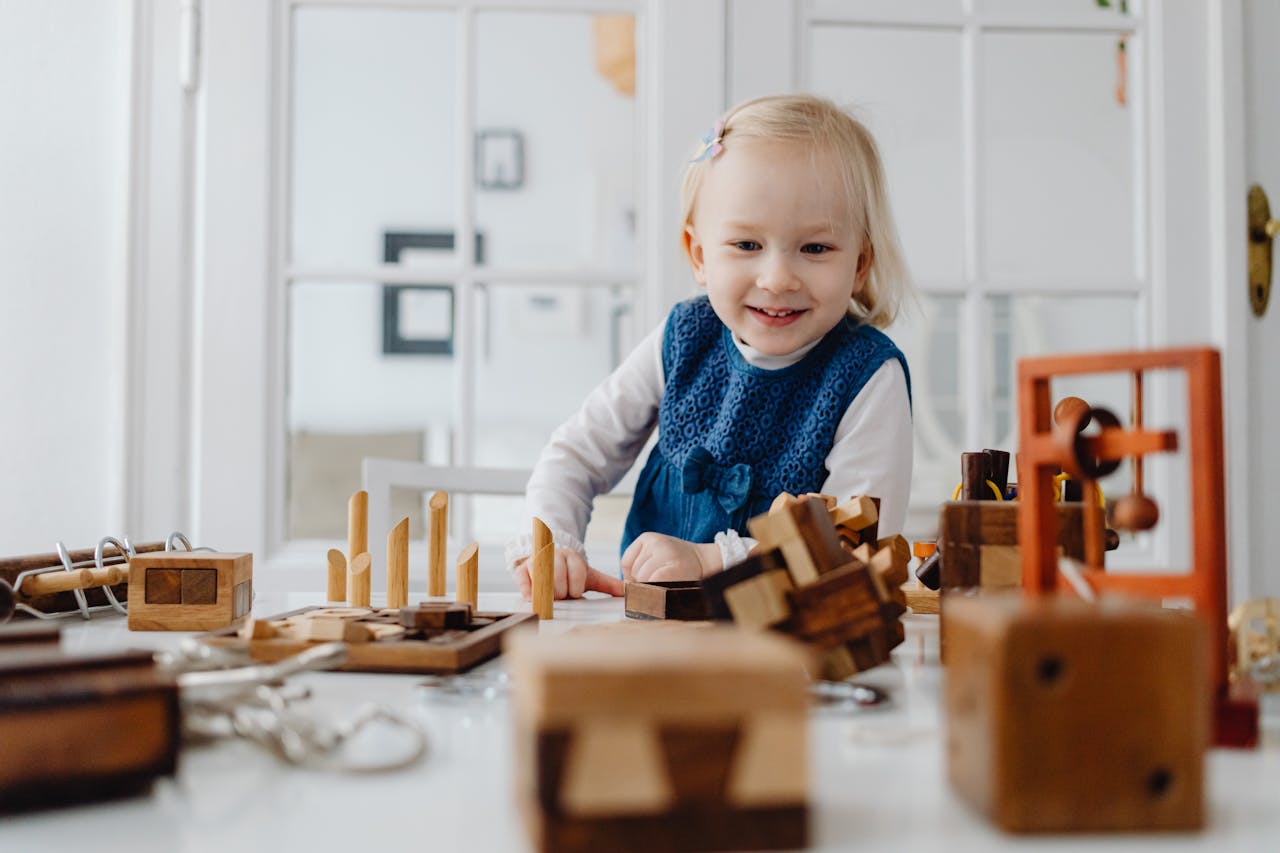Creating the Perfect Montessori Nursery: A Guide to a Prepared Environment

"The environment must be rich in motives which lend interest to activity and invite the child to conduct his own experiences." -Dr. Maria Montessori
The prepared environment, a concept created by Dr. Montessori, postulates that the environment should be designed to foster independent learning and exploration by the child. The first Montessori School in Italy in 1907 was called "Casa dei Bambini" and translated into English to "Children's House." The classroom environment is designed to emulate a home environment if the home were intended only for the children. Careful attention to detail is considered with each furnishing, displayed art piece, and even the chosen colors for the room. When creating a Montessori room for your baby, the goal is not to make a Montessori classroom at home but rather to create an environment that supports your baby's development, considers their size and age, and provides beauty and calm.
To optimize the potential of your prepared environment, there are a few things to keep in mind when preparing a baby's Montessori bedroom. The prepared environment works in tandem with you to guide your child and help them be successful. In Montessori, we believe that the environment, the adult, and the child serve as a triad, constantly working in flux. The adult prepares the environment, the child interacts with the environment, the adult observes the child, and the cycle is repeated. The prepared environment serves as a tool rather than simply a space. With this in mind, I will share how to create an optimal Montessori room for your baby and some key elements you might consider adding to your space.
Dr. Montessori believed that for children to reach their true potential, they must have ample opportunities to connect with nature. Although it can sometimes be challenging to get your baby outside in nature, there are a multitude of ways that you can bring nature inside. One of the ways to engage your baby with the natural world indoors is by sourcing furniture and other objects from natural materials such as wood, glass, ceramic, and stone. Anything in their space with which they interact should be made of natural materials whenever possible. Choosing wood furniture has many benefits, both from an environmental perspective and a child development perspective. Wood is more durable than artificial materials, so choosing furniture that lasts may be an initial investment. However, it can accommodate explorative toddlers and grow with your child. Wood is also a non-toxic material, which makes it safe for your precious little one. Natural materials provide beauty and bring the outdoors into your nursery.
"The child has a different relation to his environment from ours… the child absorbs it. The things he sees are not just remembered; they form part of his soul. He incarnates in himself all in the world about him that his eyes see and his ears hear." -Dr. Maria Montessori
Children in the period of the Absorbent Mind (the period from birth to age 6, coined by Dr. Montessori) are taking in everything around them. Babies need a beautiful, calm, and orderly environment to support their sense of order and give them a peaceful space to soak up the world. Choosing neutral colors and soft textures creates an inviting space where your baby will spend many of their early days. Consider the linens you choose, including sheets, curtains, rugs, etc. They should be soft and ideally a natural fiber like cotton, linen, or bamboo. Artwork is another facet to consider. You might choose fiber art like tapestries for your baby to touch and explore or photographs of animals or landscapes. Babies love looking at pictures of animals or other babies. I like to frame family pictures and place them in the baby's nursery so they can see familiar faces. Simplicity is vital when decorating your baby's space; less is more. Choose fewer, better-quality items over a more significant number of less-quality items. Everything should have a place, making it easier to keep the environment clean and clutter-free. Suppose your baby is used to an orderly and serene atmosphere. In that case, it will be easier to maintain this as they grow.
While both they and you will utilize your baby's room, it is crucial to create an environment that feels inviting to them. Choosing furniture that is lower and more accessible as your baby becomes mobile is one way to support their need for independence. When planning their room, you should intentionally create a space for sleep, play, movement, feeding, and changing and diapering. Keeping all of these aspects in mind will optimize your space and ensure that you are meeting the needs of your infant.
A Space to Sleep
Many families that practice Montessori utilize a floor bed for their babies. There are many different types of floor beds. Still, they intend for the baby to safely get in and out of bed independently. This allows them to listen to their body and follow their cues when tired. Some families use a simple mattress on the floor, while others have a low frame for their floor bed. W]hen babies are very young, some families use a Moses basket on top of the floor bed. This can make them feel secure because it is a smaller space, but they still get familiar with their floor bed and connect it as a point of orientation for sleep. With routine, they will learn that this is where they sleep. Even very young babies, some before they can crawl, can scoot off their bed when they are finished resting. Seeing the joy of a baby who can get out of bed independently upon waking is unimaginable.
A Space to Work & Play
Babies need to move their bodies and explore their surroundings. When they are young infants, this looks like preparing a designated space for movement. You might include:
- A soft mat for them to lie on.
- A low horizontal mirror.
- The Montessori Visual Mobiles are hanging from the ceiling or a mobile stand.
- A low Montessori shelf with a few of their toys.
It is so important for babies to be on the floor and have freedom of movement. Rather than putting them in devices that contain them (such as bouncers, swings, walkers, etc.), you can lay them on the floor in their movement area. The low horizontal mirror allows them to observe their whole body and what it looks like when they move. Before they are mobile, you can place toys near them as they experiment with grasping and releasing objects. You will likely not have a serene movement area for an older baby because they are constantly moving, but you can still have a space set up for work/play. Having a few developmentally appropriate toys on a low shelf will engage them longer than light-up or buckets of toys they dump. A pull-up bar can also be added with a mirror above and below it for the young child to practice standing and seeing how their body looks as they do so. This space may change and evolve as your baby does, and that's okay because you are following the child.
A Space to Eat
Whether breastfeeding or bottle feeding, much time is devoted to feeding your baby in those first few months. You should have a space in your Montessori nursery designated for feedings. While this space may seem more for adults, feeding is a time for bonding, and you both should feel comfortable here. You will likely want a comfy chair, a cozy atmosphere, and a small table near you to place things like snacks, a drink, or a book. Suppose you don't want the chair to stay in the room as your baby ages. Consider borrowing a chair from somewhere else in your home or getting something low to the ground and safe for your child to grow into. Connection is meaningful, and prioritizing space for feeding allows you this connection time.
A Space to Dress & Diaper
It is preferable to include your child in changing/diapering from birth to aid in cooperation, and evolving them low to or on the ground when young makes them feel safer and more secure. Consider providing your child with a small wardrobe rather than a dresser. You can display and offer a few small choices for your child, such as choosing a diaper or the outfit they want to wear. Offer limited options, and remember that you will be the one cleaning up for a while, so only offer what you're willing to clean up. The previously horizontal mirror can now be used vertically in the changing area to practice dressing and see themselves standing vertically. There are many options for children's wardrobes depending on your style and your family's needs.
All of these elements culminate into an environment that is not only inviting but also purposeful for your child. When you think about their developmental needs, you can create a space that offers them choices, freedom of movement, order, and beauty. Let your personality shine through by infusing personal touches and colors important to you, but remember that less is more, and simplicity is vital. What is your favorite aspect of a Montessori nursery?








